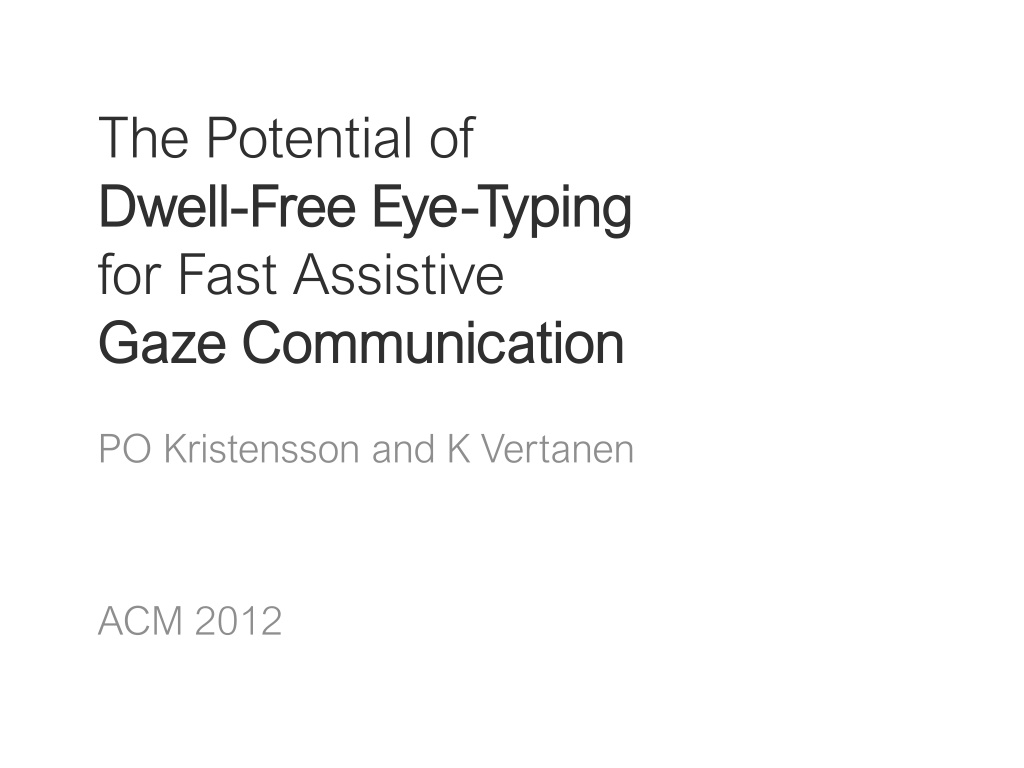Fast Assistive Gaze Communication - Dwell-Free Methods
Explore the cutting-edge technology of fast assistive gaze communication through dwell-free methods, revolutionizing hands-free typing for enhanced accessibility and communication. Discover innovative approaches like Dasher and EEG-based systems, promising faster typing speeds and improved user experience. Dive into the potential and future advancements in this exciting field.
Download Presentation

Please find below an Image/Link to download the presentation.
The content on the website is provided AS IS for your information and personal use only. It may not be sold, licensed, or shared on other websites without obtaining consent from the author. Download presentation by click this link. If you encounter any issues during the download, it is possible that the publisher has removed the file from their server.
E N D
Presentation Transcript
The Potential of Dwell Dwell- -Free Eye Free Eye- -Typing for Fast Assistive Gaze Communication Gaze Communication Typing PO Kristensson and K Vertanen ACM 2012
Outline Hands-free typing Traditional dwell-based gaze typing Dasher (adaptive dwell-time) A dwell-free method Brief project update
Hands-free typing EEG voice eye
Gaze/eye typing Typically keyboard-based Require event demarcation, which is slow: dwell-time (most common) special region special gesture Appear to have approached limit: ~20 wpm Fastest traditional eye-typing method (Majaranta, 2009): allows user to adjust dwell-time 19.8 wpm, 282 ms dwell-time
Dasher Adaptive dwell-time No explicit demarcation 16-26 wpm
Dasher Muscle memory impossible
"Ideal" performance 8 participants (4m, 4f) Tobii P10, 40Hz, 0.5 QWERTY keyboard, 15 x 6 cm 500 phrases, word = 5 chars 5 x 10 min sessions Read phrase, press SPACE, start Must be within 1 key of correct letter before moving on
Results 37-54 wpm by last session (mean 46 wpm) counted spaces in wpm (~29-37 wpm w/o) ~50% of the time, participants never went inside actual key
Future work Memorize beforehand Allow missed letters Incorporate error correction
Summary Current dwell-based methods seem to have peaked Dwell-free methods could speed up by 2x These speeds not theoretically achievable with dwell-based methods























